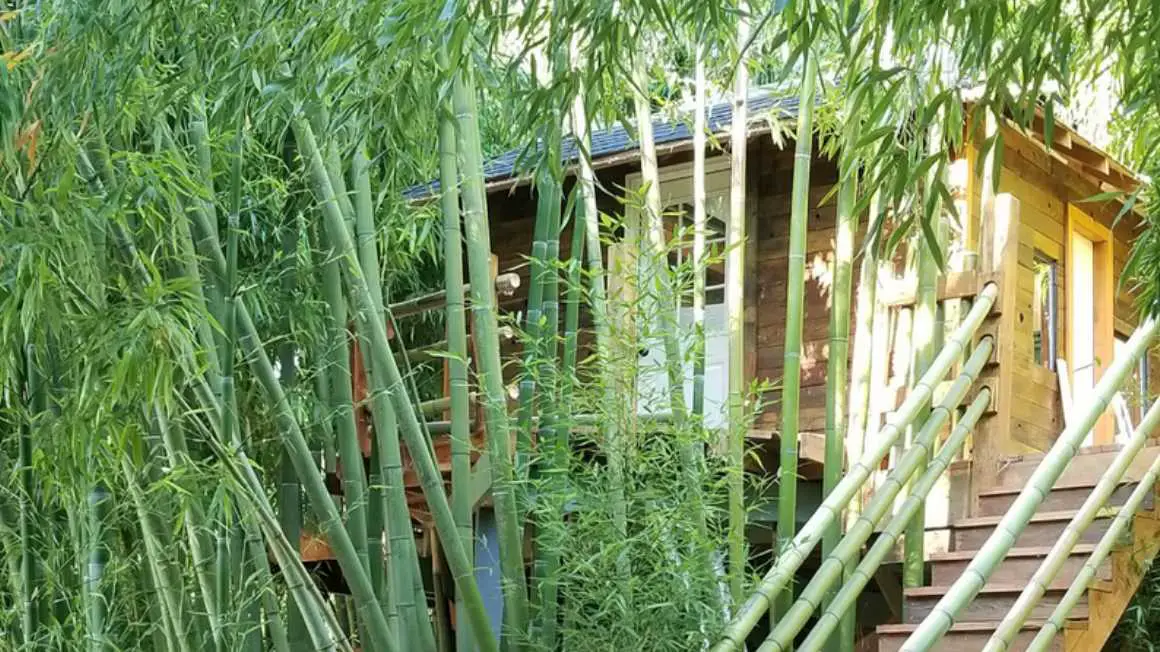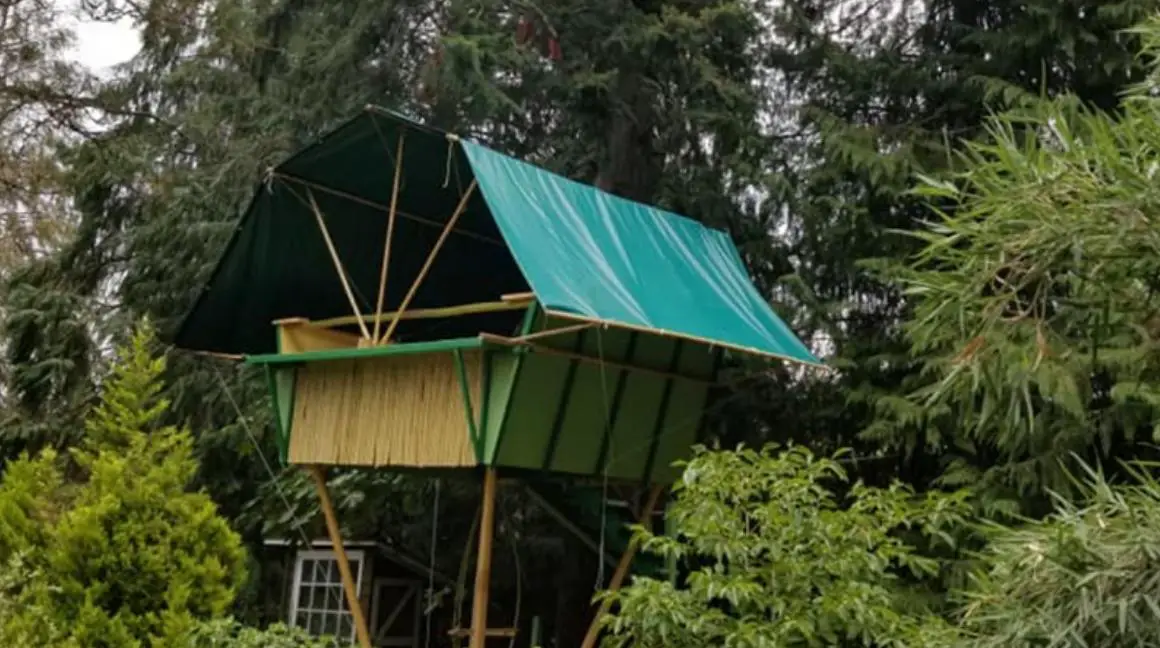Bamboo is a marvelous building material that is both modern and ancient. It confers both simplicity and elegance. And nothing expresses these paradoxical properties better than a bamboo treehouse. When built with care and precision, a bamboo treehouse can withstand the elements and blend seamlessly with its surroundings.
Hooch Treehouse, based in Portland, Oregon, builds some of the most charming and contemporary bamboo structures for those who appreciate rustic beauty, natural aesthetics, and scenic panoramas. They also have extensive experience building in Puerto Rico.
Hooch founder and chief architect, Jo Scheer, contributed the following essay, in which he shares his personal story, his love for tree houses, and his passion for bamboo.

Reflections from a bamboo builder
Everyone loves a treehouse. A surprising reason for this is that it is pre-programmed into our DNA. The renowned Harvard professor and biologist E. O. Wilson proposed that living in high places allowed our ancestors to see danger and be aware of approaching danger, providing ample time to prepare from a safe and secure vantage point. These smart hominids passed on their genes to us. We now appreciate grand views, not for survival, but for aesthetics.
But I digress. I want to talk about the beauty and utility of bamboo, a resource long known and ingrained in the cultural heritage of a vast swath of humanity. I want to talk about how bamboo is such a natural structural component of a tropical treehouse. Bamboo can be grown quite quickly, and with over 1200 species, a great variety of characteristics are available for various structural components. I embarked on this journey to build bamboo treehouses on my finca on the West Coast of Puerto Rico. I planted over 30 species of bamboo, including two giants, Guadua angustifolia and Dendrocalamus asper.
I was able to grow my own treehouse. The long, strong poles available to me led to an appropriate design strategy. Instead of designing a treehouse that fits in a particular tree, I designed a standardized, single-point foundation treehouse that fits among the trees, with a cable to the surrounding trees to keep the structure upright. The strategy had the advantage of pre-fabrication, a re-usable design, and an easily conceptualized and designable structure for CAD.
Bamboo confronts the forces of nature
That was the easy part. The real world has many natural hazards that threaten the structural integrity and lifespan of a bamboo treehouse. Some notable considerations include termites, powder post beetles, wind (and especially hurricane-force wind), rain, and sun, each of these.
Design becomes very important in mitigation strategy and often solves several overlapping problems. We start with a large roof overhang, blocking the sun and sheltering the structure from persistent moisture. A cool and dry understory reduces stress from rapid temperature swings, and protects a damp environment from bug infestation. Split bamboo 1/2 walls with upper end grain protection and drip dryable lower end grain allows the bamboo to dry out rapidly. Facing the inside of the split bamboo to the outside and the smooth, clean outer skin of the bamboo to the inside prevents bleaching and maintains a pleasing interior.
Termites require moisture to survive. A dry, well-ventilated interior is very important to keep this insect in check. But this strategy is not absolutely effective. A secondary practice is constant inspection and removal of any termite colony establishments. The design again facilitates this practice by having all surfaces open and easily observed. The single-point foundation is the only place where termites can enter the Hooch Treehouse structure. I have addressed this with a moat around the base. And surprisingly, it works!
The powder post beetle is yet another threat. Its presence, which needs to be dutifully inspected in all components, is indicated by tiny holes in the bamboo. You can freeze small components for no less than 48 hours. Larger components with signs of infestation should not be used.
Finally, bamboo does not last forever, but it does last a long time when addressing the multitude of threats. A design of easily replaceable components, using screws and through bolts, allows renovation and refurbishment without complete dismantling of the entire structure.
Putting bamboo to the ultimate test
Speaking of complete dismantling of the structure, there is one last design consideration: hurricanes. The Hooch Treehouses in Puerto Rico and elsewhere have been shown to resist structural damage and withstand hurricanes up to category 3 (120 MPH winds). However, Hurricane Maria, a category 5 hurricane (160+), proved their demise. Forensic inspection and analysis identified a fundamental flaw: the roof acted like a giant sail, inducing extreme and damaging stress, ultimately failing. New hooch designs incorporate a flexible, removable fabric roof, such that the sail is taken down, and the remaining sticks in the air can withstand the wind.

Caveat: Hurricanes generate a multitude of tornadoes, with highly random and extreme winds. A direct hit is, in my opinion, not survivable. And this brings me to the very last design consideration. The Hooch Treehouse is a transient, impermanent, ephemeral structure, with a small footprint (literally and figuratively.) It can be re-built with minimal effort. And, in the time you enjoyed the view, the sleep-outs, and the cool, quiet ambiance, your bamboo forest has been growing, becoming an abundant and available resource.
This has been my experience.
~ Jo Scheer, Hooch Treehouse
Bamboo support
Hooch Treehouses are just one example of how we can incorporate bamboo into innovative, sustainable architecture. If you’re interested in learning more about building bamboo structures, check out some of these fascinating articles.


























Jo’s work is indeed inspiring. I very much look forward to seeing him again and to learning from him!